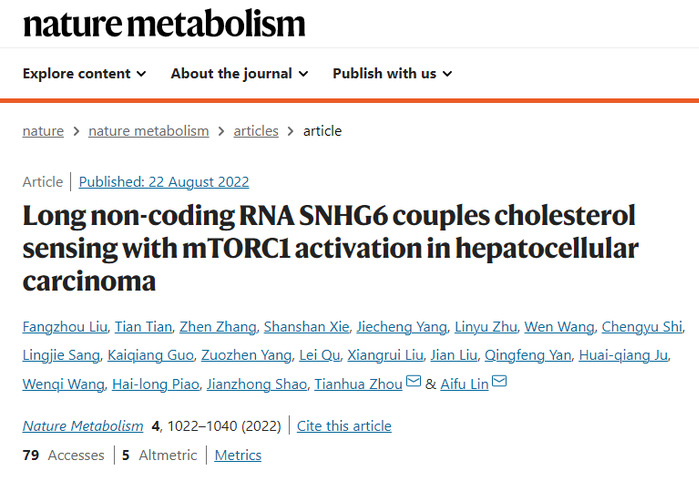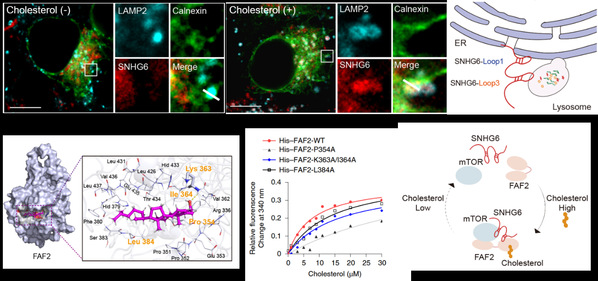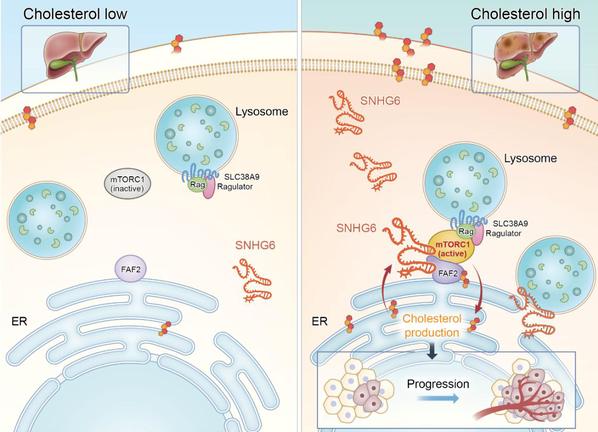
Title: Long non-coding RNA SNHG6 couples cholesterol sensing with mTORC1 activation in hepatocellular carcinoma
Fangzhou Liu, Tian Tian, Zhen Zhang, Shanshan Xie, Jiecheng Yang, Linyu Zhu, Wen Wang, Chengyu Shi, Lingjie Sang, Kaiqiang Guo, Zuozhen Yang, Lei Qu, Xiangrui Liu, Jian Liu, Qingfeng Yan, Huai-qiang Ju, Wenqi Wang, Hai-long Piao, Jianzhong Shao, Tianhua Zhou & Aifu Lin
Abstract
Cholesterol contributes to the structural basis of biological membranes and functions as a signaling molecule, whose dysregulation has been associated with various human diseases. Here, we report that the long non-coding RNA (lncRNA) SNHG6 increases progression from non-alcoholic fatty liver disease (NAFLD) to hepatocellular carcinoma (HCC) by modulating cholesterol-induced mTORC1 activation. Mechanistically, cholesterol binds ER-anchored FAF2 protein to promote the formation of a SNHG6–FAF2–mTOR complex. As a putative cholesterol effector, SNHG6 enhances cholesterol-dependent mTORC1 lysosomal recruitment and activation via enhancing FAF2–mTOR interaction at ER–lysosome contacts, thereby coordinating mTORC1 kinase cascade activation with cellular cholesterol biosynthesis in a self-amplified cycle to accelerate cholesterol-driven NAFLD–HCC development. Notably, loss of SNHG6 inhibits mTORC1 signaling and impairs growth of patient-derived xenograft liver cancer tumors, identifyifng SNHG6 as a potential target for liver cancer treatment. Together, our findings illustrate the crucial role of organelle-associated lncRNA in organelle communication, nutrient sensing, and kinase cascades.
Link: https://www.nature.com/articles/s42255-022-00616-7







